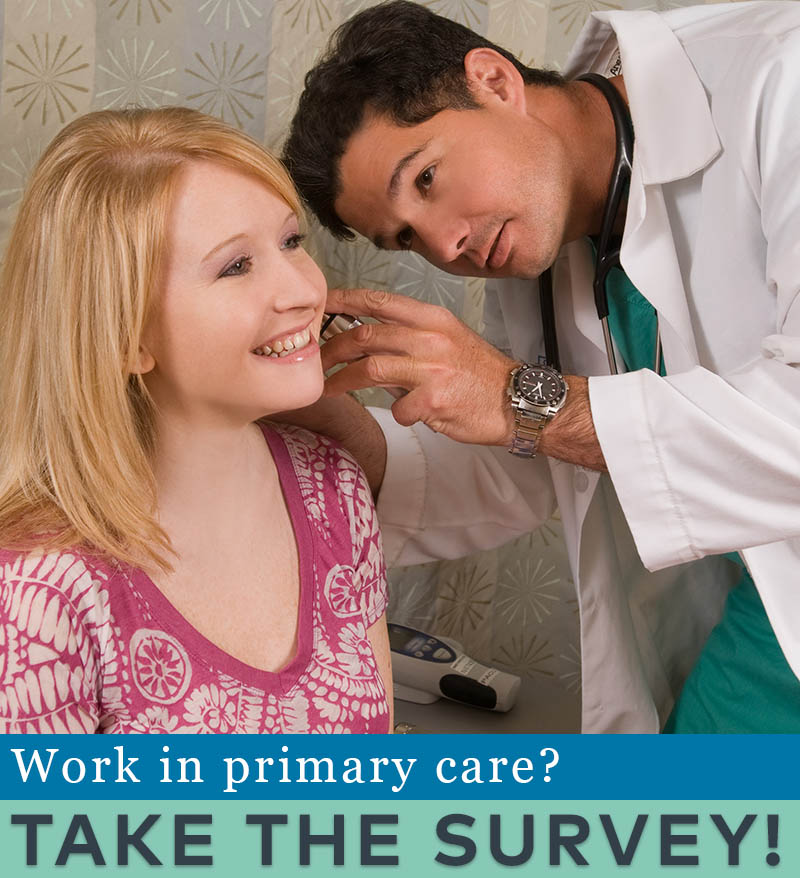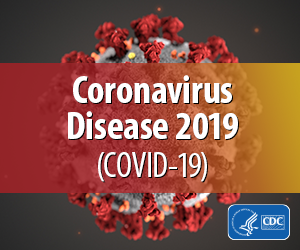You are looking at an archived version of our site. Please visit thepcc.org for a fresh, new experience!
You are here: Array » Primary Care & COV ...
Primary Care & COVID-19: Week 17 Survey
Check back weekly for the latest survey results and updates.
For data from the previous survey, see Week 16 Results.
Who replied to the survey in Week 17?
The Primary Care Collaborative is partnering with the Larry A. Green Center to regularly survey primary care clinicians and patients to better understand the impact of COVID-19 in real time.
523 people from 47 states and Guam responded to the survey of clinicians July 24-27, 2020. 73% of respondents identify their practice as family medicine, 15% as internal medicine, 5% as pediatrics, 3% as geriatrics, and 4% as other. Settings include 23% rural, 15% community health centers, 9% in schools/offices, and 28% in designated patient-centered primary care homes. 34% have 1-3 clinicians in the practice, 29% have 4-9 clinicians, 37% have more than 10 clinicians. 40% are owned by a health system, 32% are self-owned, 13% are independent and large-group, and 5% are government-owned. 8% are convenience settings, and 5% are membership-based.
Results at a glance
A pandemic “new normal” is emerging. It is a picture of suboptimal practice for both clinicians and patients, with hesitant patients at risk of missing needed care and clinicians adjusting practice modalities in response to payer policies as well as patient preferences.
Over 55% of responding clinicians report a level of stress of 4 or 5 out of 5, with 33% reporting that stress seems worse than during the first month of the pandemic, and 43% choosing the response of “it’s the same, but we’ve adjusted” or “it’s getting better.”
The continued stress of COVID-19 extends to patients as well, with 80% of clinicians reporting that “patients are carrying a heavier than usual mental health burden.” When asked to describe the last four weeks, slightly more than half of clinicians (51%) report an uptick in suspected COVID-19 cases among their patients, and there is a noticeable uptick in practice stress due to COVID-19 surge.
Almost half (46%) of practices report that they are offering preventive and chronic care management visits, but patients are not scheduling them, and 44% report that in-person visit volume is between 30%-50% below normal over the last four weeks. At the same time, over the last week, 58% of clinicians report the mode of care is “more in-person than anything,” with video and phone modalities falling sharply as compared to responses in earlier surveys when more shelter-in-place orders were in effect.
There is a mixture of expectations for the near future.
When asked to look ahead at the upcoming four weeks, over 80% of respondents expect to have enough staff, billable work, and cash on hand to stay open. More than 20% report that some payers are pulling back on payments for telemedicine, and 35% say their use of phone visits is falling because payment is poor. In another sign of persistent economic stress, over 20% of clinicians report expecting to skip or defer salaries over the next four weeks.
Learn more: Download the Series 17 Clinician Survey Executive Summary (includes select open-ended answers to survey questions)
Voices from the Primary Care Front Lines
We asked clinicians, “Can you briefly describe your new normal?” Here are a few representative sentiments:
Lower salary for more work, risk of serious illness every day, doing my staff’s jobs because they are afraid to touch and be in the room with patients, spending my own money ($30k) on PPE for the entire clinic despite working for a huge hospital system, and having the federal gov't specifically exclude me in COVID-19 workplace benefits (FFCRA). Pretty much a nightmare. (Texas)
Horrible. Angry patients, extended work and new duties to accommodate testing-never feeling any sense of control. I feel like my life is expendable in terms of the overall company’s financial health. (Nevada)
Some days are video, some in-person. We 'put out fires', manage patient problems that were deferred. More 'volunteer' care, patients with poor access, poorly/unpaid telephone and portal care. Video is over-sold - I can't examine people over poor-quality video. Pushed to schedule more patients to cover operating losses during COVID surge and system ramp-down. (Michigan)
It is getting worse: staff stress, patient stress, volume management, crazy increase in medical conditions. (Colorado)
Reduced salaries, reduced schedules, reduced vaccinations for kids, hiring freezes, supply chain issues even for non-PPE. (Oregon)
| Attachment | Size |
|---|---|
| 729.63 KB | |
| 208.93 KB |

Are you a physician, nurse practitioner, or PA working in primary care?
Help PCC and the Larry A. Green Center track how your practice is responding to the COVID-19 outbreak by completing the Green Center's occasional survey.
The regular surveys are no longer being conducted.
COVID-19 Updates
May 9, 2022 | Primary Care Collaborative
April 19, 2022 | Primary Care Collaborative
April 19, 2022 | Primary Care Collaborative
March 7, 2022 | STAT
February 27, 2022
- 1 of 39
- next ›

Recent News
August 16, 2024
August 12, 2024
July 16, 2024
May webinar highlights: “The Commercial Market: Alternative Payment Models for Primary Care” Nate Murray explains w… https://t.co/KX9Wi2w6oY —
2 years 5 months ago
@CMSinnovates’ primary care strategy is rooted in a 2021 @theNASEM’s report which called #primarycare “foundational… https://t.co/glbPxvCysg —
2 years 5 months ago
@CMSinnovates has a new #primarycare strategy, envisioning “ACO-based primary care model tests that may focus on pr… https://t.co/aJGF1z411l —
2 years 5 months ago
- Page 1
- ››
Secondary menu
Copyright © 2024 Primary Care Collaborative





